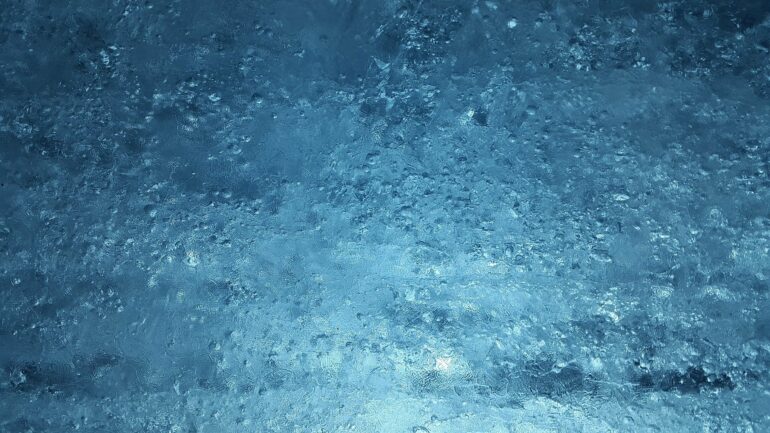Scientists have discovered the traces of the world’s oldest known glaciers, dating from 2.9 billion years ago, in rocks sitting under the world’s largest gold deposits in South Africa. This suggests the presence of continental ice caps at that time and that either the area was closer to the poles, or that parts of the Earth may have been frozen in a previously unknown “snowball Earth” period of extreme cold weather.
This work is based on the article, “Earth’s first glaciation at 2.9 Ga revealed by triple oxygen isotopes,” by A. Hofmann and I.M. Bindeman in Geochemical Perspectives Letters. This work will be presented at the Goldschmidt geochemistry conference in Lyon in the talk number 17171 entitled, “A model of unidirectional and accumulative fluxes from mantle to the lithosphere explaining crustal growth via triple oxygen isotope mass balance throughout Earth’s history.”
Scientists agree that there must have been large variations in the early Earth’s climate, but convincing evidence of the exact conditions in the early Earth have been difficult to find.
Now researchers Professor Axel Hofmann (University of Johannesburg, South Africa) and Professor Ilya Bindeman (University of Oregon, U.S.) have found evidence from relative oxygen isotope concentrations in ancient rocks, as well as physical proof, showing firm evidence of glaciers, 2.9 billion years ago.
Ilya Bindeman said, “We found extremely well-preserved glacial deposits close to the gold fields of South Africa. This is one of the few areas which remain fairly intact and unchanged from the early Earth. These deposits are fossilized glacial moraines, which are basically the debris left by a glacier as it gradually melts and contracts. These are the oldest moraine deposits ever found. In addition, we were able to correlate this with analysis of oxygen isotopes from these rocks, which showed that the climate must have been cold when the rocks were deposited.”
“We looked at relative amounts of three oxygen isotopes, 16O, 17O, and 18O. These are all types of oxygen but have very slightly different weights. We found that these rocks had very low amounts of 18O, and very high amounts of 17O, indicating that they were formed at icy temperatures. This means ice. Couple that geochemical evidence with the moraine evidence, and it means glaciers, the oldest glaciers yet found on Earth.”
The researchers put forward a couple of possible explanations. “It may be that this area was close to the poles. Another possibility is that the whole Earth was in a ‘snowball Earth’ period, when low atmospheric concentrations of CO2 and CH4 led to a ‘reverse greenhouse effect,’ causing much of the planet to freeze. Scientists believe that this may have happened on a couple of occasions in the more recent past. If so, this would be the earliest such global cooling period recorded. Either possibility is scientifically interesting,” said Axel Hofmann.
He added, “The largest sedimentary gold deposits in the world are found in slightly younger rocks sitting above the rocks we studied. It’s possible that a change from icehouse to greenhouse conditions may have aided in the formation of those gold deposits, but this needs to be confirmed and requires further work.”
Commenting, Dr. Andrey Bekker (Associate Professor at the Department of Earth & Planetary Sciences, University of California, Riverside) said, “Evidence for glaciation of this age has been hotly discussed and debated for decades based on sedimentological evidence with suggestions ranging from high altitude to high latitude glaciation. Triple oxygen isotope analysis add an entirely new line of evidence to this argument. The biogeochemical carbon cycle not only controls climate, but also atmospheric oxygen content and these data are likely to trigger follow-up studies on the transient oxygenation at that time.”
More information:
A. Hofmann et al, Earth’s first glaciation at 2.9 Ga revealed by triple oxygen isotopes, Geochemical Perspectives Letters (2023). DOI: 10.7185/geochemlet.2319
Provided by
Goldschmidt Conference
Citation:
Scientists find evidence of world’s oldest glaciers (2023, July 13)



